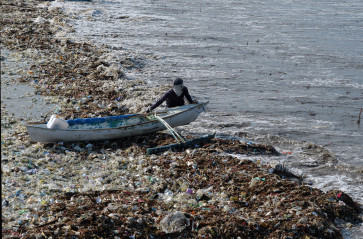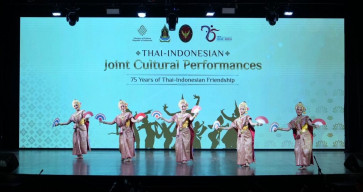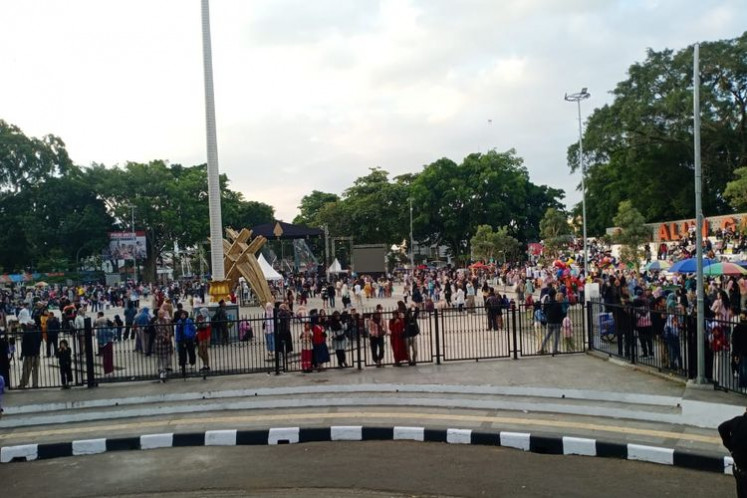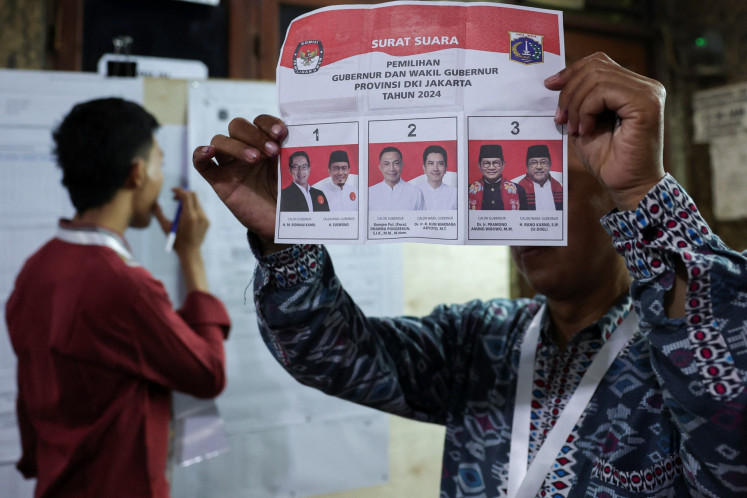Popular Reads
Top Results
Can't find what you're looking for?
View all search resultsPopular Reads
Top Results
Can't find what you're looking for?
View all search resultsPRIYO SALIM: Preserving silver handicrafts through innovation
JP/Simon Sudarman As a native of Kotagede, Yogyakarta, known for its silverware, Priyo Salim is a master silver craftsman down in his bones
Change text size
Gift Premium Articles
to Anyone
J
em>JP/Simon Sudarman As a native of Kotagede, Yogyakarta, known for its silverware, Priyo Salim is a master silver craftsman down in his bones.
Inheriting his parents' silver handicraft business, the 52-year-old is now striving to preserve the works of art and further improve his products in spite of local market uncertainties.
More than 80 percent of Priyo's silver handicraft creations are exported to other countries, including Singapore, the US, Canada and the Netherlands.
'We purposely set our target overseas not just because of the lack of local interest, but also due to the low purchasing power at home, giving the domestic market less potential. Silver handicrafts are pricy, as the material is expensive,' Priyo said.
Operating his business under the brand Salim Silver and supporting over 30 employees, Priyo continues to innovate and strive to boost his home industry amid unclear prospects, for silver as a world commodity is affected by international price fluctuations.
The 1991 graduate of Yogyakarta's Gajah Mada University realizes that the silver business faces challenges and vulnerabilities, particularly as silver is subject to price changes caused by even slight international upheavals.
Priyo, who used to assist his parents in managing handicraft production, has noted a steep rise in the price of silver from Rp 400,000 (US$41) in 1998 to more than Rp 3 million per kilogram today.
When the global economic crisis struck in 2008, the price soared to over Rp 6 million per kilogram.
Marketing most of his silverwork in the US, Priyo felt the impact of the economic crisis, forced to reduce his workers from 60 in 1998 to 30. The same situation has also adversely affected other craftsmen, especially small-scale businesses, forcing them to close due to the costly material and weak local market.
'Now the business is still bad because of the imposition of a 10 percent value added tax [VAT]. Such complications further render silver craftspeople uncompetitive in global business,' Priyo said with concern.
He said that during the term of former president Abdurrahaman Wahid or Gus Dur, VAT was abolished. In the era of Indonesia's first president, Sukarno, aid was provided in the form of low-cost silver, while during Soeharto's presidency Kotagede enjoyed large orders as silver handicrafts served as state souvenirs presented to foreign dignitaries.
Gus Dur's successors, Megawati Soekarnoputri and Susilo Bambang Yudoyono, restored the VAT.
Admittedly, according to Priyo, silver handicraft businesses in Kotagede are now assisted with training, management, equipment and overseas program participation, among others. However, the VAT renders virtually all the other aid insignificant.
'To be frank, the tax makes it hard for us to compete. By setting our targets abroad, we have to compete with other countries like America itself, India, China, Thailand and many others,' said Priyo, who launched his first display in Singapore in 1999.
The United States has remained a major market destination for Priyo's products because despite America's rapid technological advancements, silver handicrafts from Kotagede continue to be works of art much sought after by Americans.
The man actually started exporting his silverwork to the US in 1990, but Americans had been visiting Indonesia to buy Kotagede souvenirs since the 1970s and 1980s.
'They were mostly businessmen who bought silver handicrafts here for resale in the US. In later years, Americans were not just buying the items available, but also created their own designs and then asked local craftsmen here to produce silver articles tailored to their patterns,' Priyo said.










